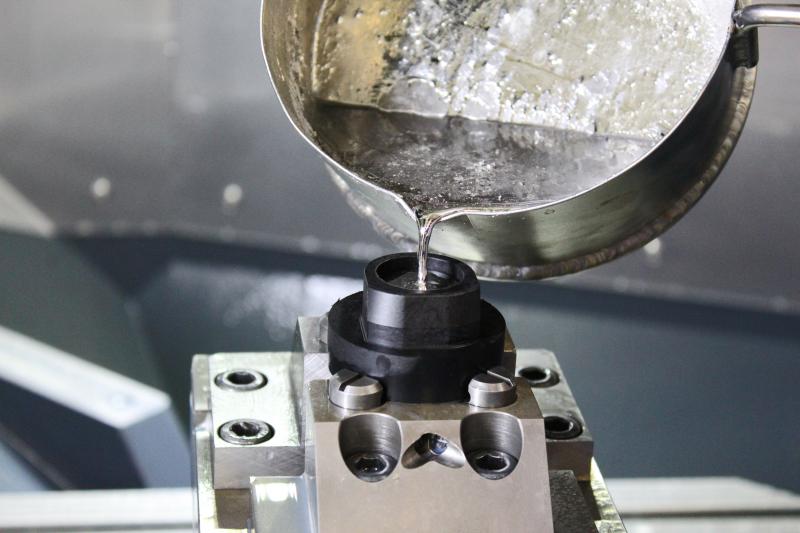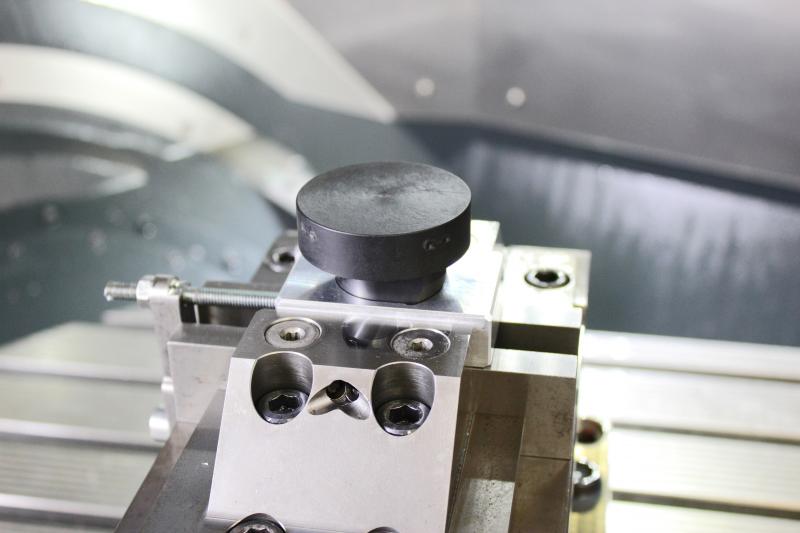Special demands on clamping methods are made when machining geometrically complicated and often sensitive work pieces. Intricate ridges or extreme undercuts are just a couple of challenges where reliable part clamping is concerned. Low-melting bismuth alloy is an attractive solution in terms of cost and handling compared to conventional means.
The company Rapid Prototyping Technology GmbH has opted for this solution and has been using Witte WEIGUSS now for six years. Rapid Prototyping Technology GmbH in Gifhorn was founded 20 years ago and today employs 50 people on a production area of 2.800m². The company offers services ranging from CAD design through rapid prototyping, model making and metal machining up to the reproduction of prototypes in required quantities using vacuum casting technology.
When manufacturing prototypes or small series one of the most common methods is milling on machining centers. Problems arise whenever all sides of a workpiece have to be machined. Many steps in different set-ups are the result and repeatability of these setups is one of the challenges. For delicate parts, mechanical clamping is always critical with regard to work piece deformation, the associated loss of accuracy and the danger of not being able to maintain tolerances. A common way to solve these problems, is to clamp the component and mill a first side leaving ridges which still connect the part to the raw material. The component is then turned over and machined on the other side. The further the degree of machining proceeds the less material is left and filigree, delicate structures ensue. In addition to the loss of any kind of precision time-consuming and complicated manual reworking is often necessary. The alternative – milling a negative pocket in a raw block and gluing the component machined on one side inside the pocket for further processing – cannot be called a secure solution. The adhesive and consequently the component can come loose.
Witte WEIGUSS mold clamping technology simplifies manufacturing such components, as Thomas Schlottman from RPT puts is "Without WEIGUSS we would not have been able to manufacture this particular part." For filigree, intricate components, with a tolerance of less than one-hundredth, dimensional stability is regarded as the ultimate goal. These tight milling tolerances are not affected by the Witte WEIGUSS process.
Good machinability is a further advantage of the alloy. It may happen during machining on the reverse side that the cutter goes into the hardened WEIGUSS mass. However, since the bismuth alloy is similar to aluminum during machining, and creates only small chips, it is not a problem. If for example the alloy was made of lead, ridges would build up at the tool very quickly and could lead to tool breakage.
Mold clamping process
In the first step, a component is machined to the extent it can be clamped again. After heating to 70 ° C the WEIGUSS, which comes in a bar form, changes to a casting compound and is used to “fill up” the part just machined. In this casting process the WEIGUSS is poured like water into the component. The liquid metal finds its way into all undercuts and cavities and during the solidifying process, the casting compound expands by about 0.6%, resulting in a clamping effect. Subsequently, reference points and/or surfaces are milled into the WEIGUSS, so that the work piece including the fixture can be clamped in a different position. The component is then machined on its last side. After machining is completed the finished part is put into water heated to about 70 ° C, which causes the alloy to melt and separate from the part. The casting compound does not mix with water and the mass is not reduced. The alloy solidifies to form a lump, meaning that WEIGUSS can be melted and reused any number of times. The only losses occur during machining as chips or as slag resulting from melting but these amounts are negligible.
Thomas Schlottman is committed to mould clamping technology: "Our business has been enhanced enormously by Witte WEIGUSS. We are talking about an expansion of our product spectrum by two to three times". Witte WEIGUSS simplifies the clamping process and machining of filigree contours and sensitive components. Using WEIGUSS mould clamping technology components are held by the solidified alloy, there is no chatter, no vibration and no loosening of the component. Due to the low consumption and reusability of WEIGUSS, real recycling is guaranteed.





 Germany
Germany